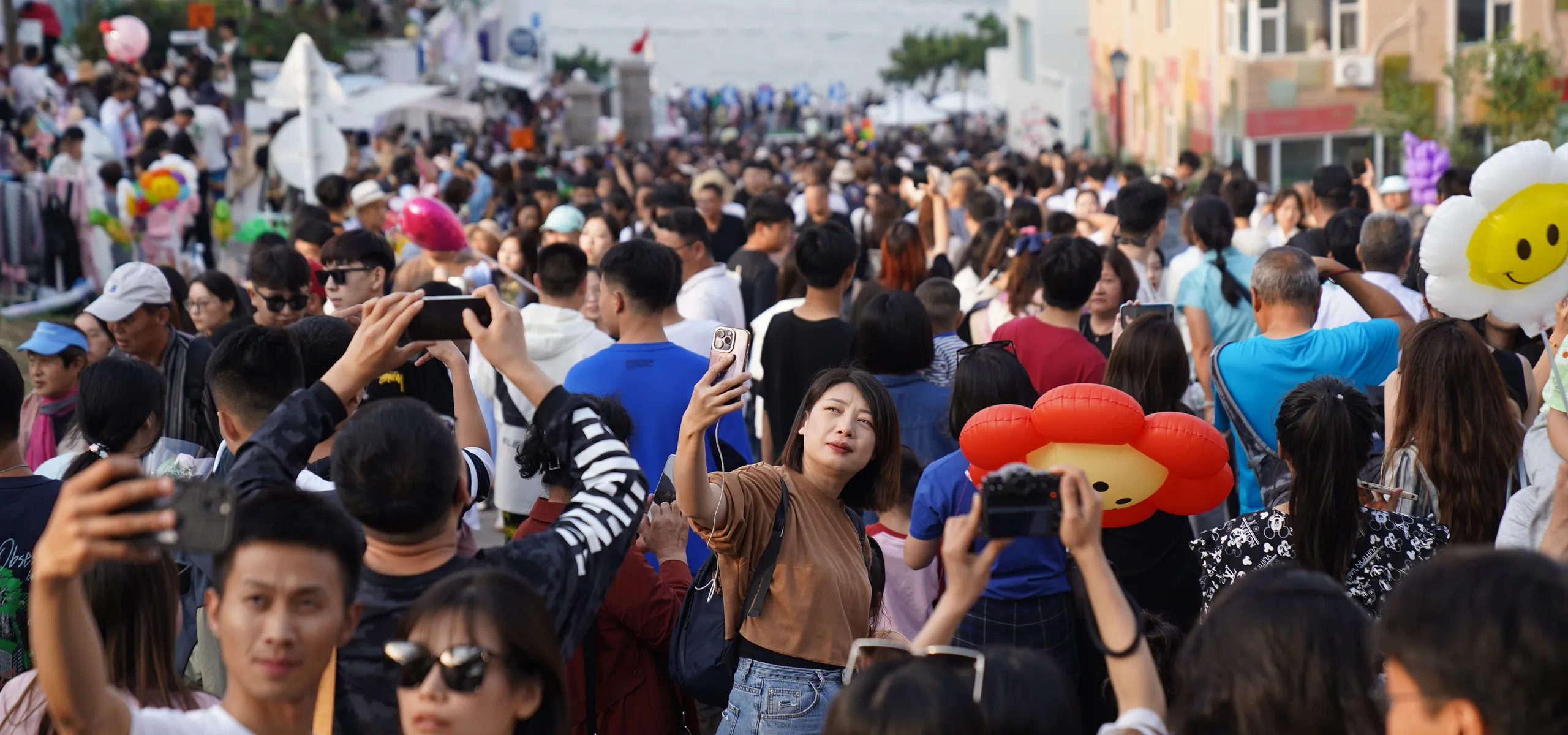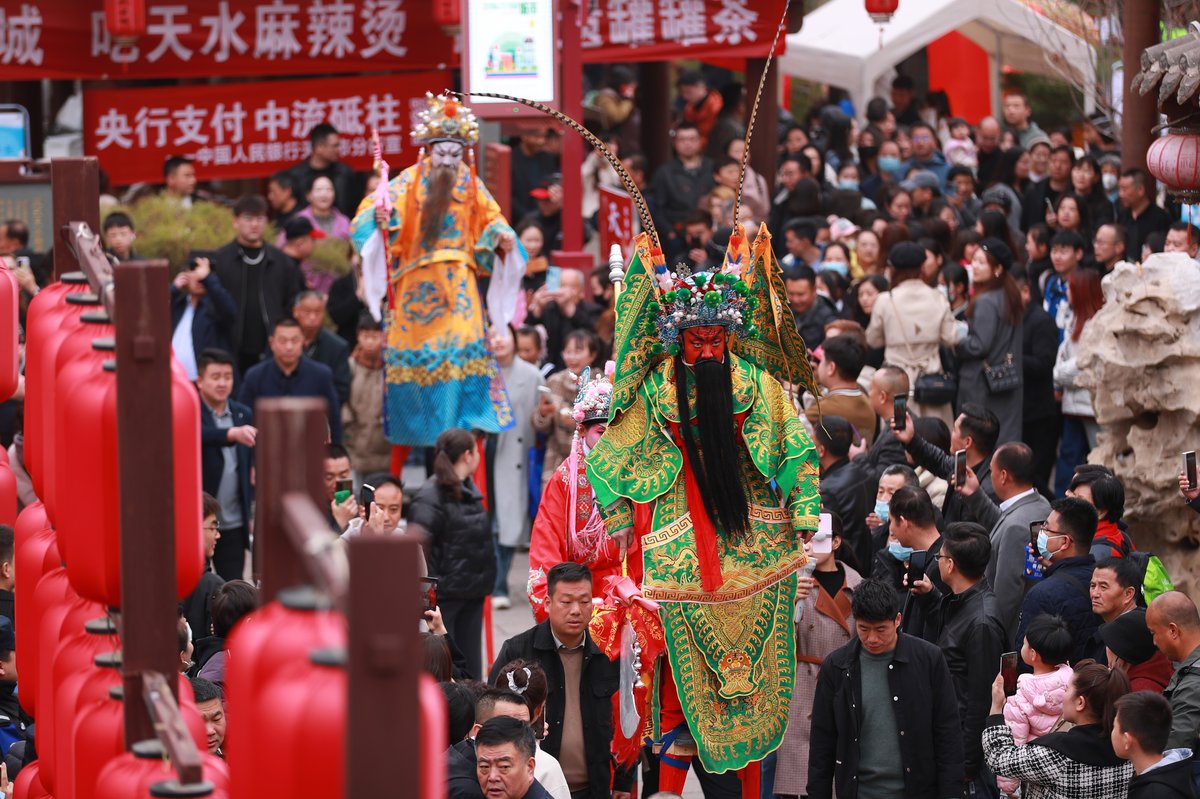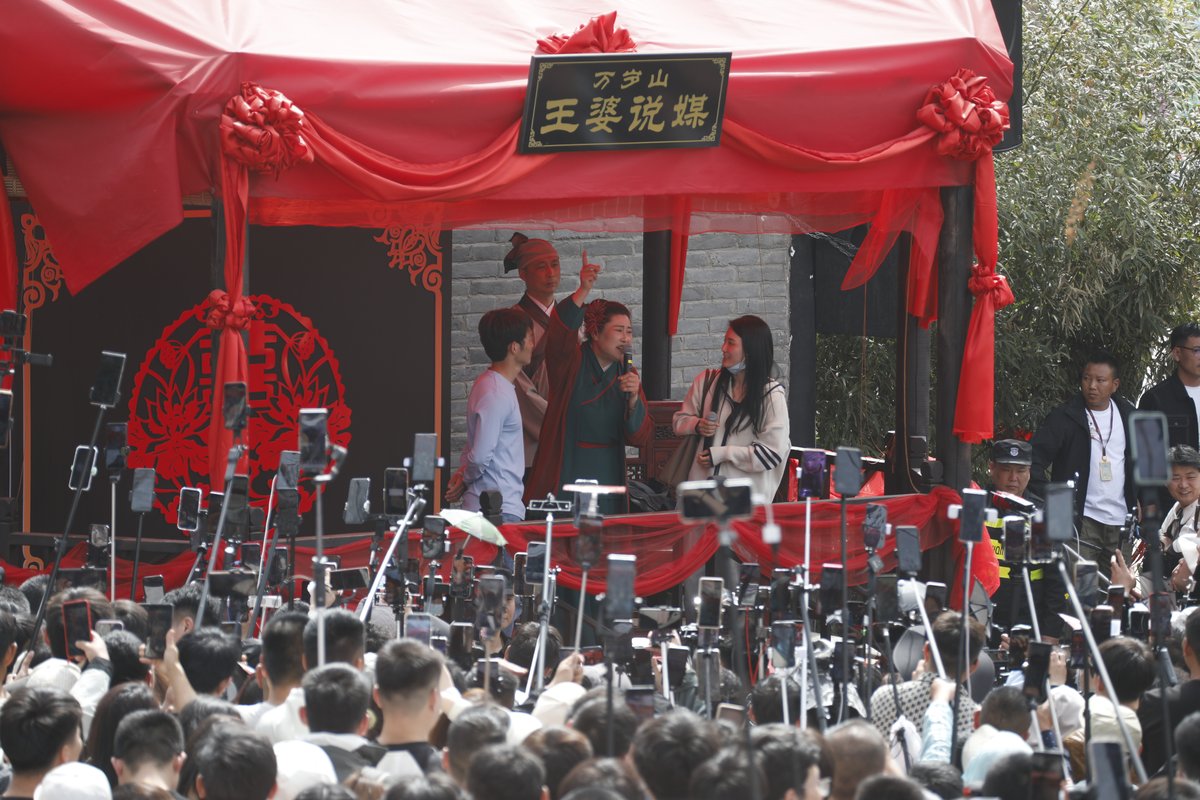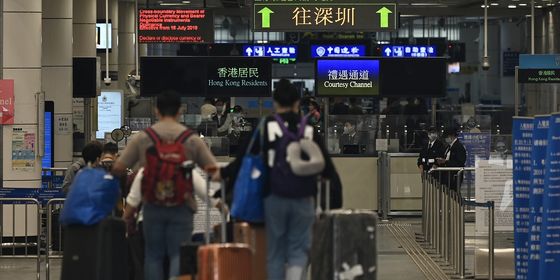How cities fight for tourists with social media marketing and enhanced hospitality, despite the strain visitors place on local infrastructure
This April, lured by tantalizing videos of malatang online, Lin Yi finally yielded to temptation and embarked on an exhilarating two-day trip to Tianshui, Gansu province.
Half an hour’s ride later from their hometown in nearby Shaanxi province, Lin and her friends emerged from the high-speed rail station, where they were warmly greeted by volunteers who directed them toward the special Tianshui malatang lines, from which they could head straight to the crowded eateries selling the city’s viral “spicy hot pot” dish. “Everyone here is friendly and willing to help if you ask for directions,” says the 23-year-old college graduate. “There were performances in the square near Tianqiao from morning to night. I also saw people cleaning the railings on the bridge,” adds Lin, who asked to be identified by a pseudonym for this piece.
Offering good food and hospitality might seem like a no-brainer to any city trying to attract more tourists. But in China, this trend marks a shift in tourism culture that has long been focused on package tours and “checking in” at famous historic or scenic sites. It provides smaller, regional cities without well-known attractions opportunities to distinguish themselves and diversify their economy.
Last year, Zibo, an obscure city in eastern China, was besieged by millions of young travelers dropping in to try its outdoor barbecue—which Zibo wasn’t previously known for (and isn’t particularly good at, according to some travelers’ reviews). Tianshui has now stepped into the spotlight, seemingly thanks to its local take on a cuisine found in every Chinese city, as well as its friendly locals and down-to-earth charm.
This evolution in travel preferences, from “famous historical sites” to “human warmth,” has been fueled by social media. A survey conducted by the state-owned newspaper Guangming Daily this March asking “What kind of travel experience do you find most important?” revealed that about 30 percent of readers prioritize “gaining emotional value,” while over 20 percent seek to immerse themselves in a different cultural atmosphere.
Yet going viral is not a silver bullet. In the past year, numerous regional cities tried to replicate the success of Zibo and Tianshui, hoping virality can relieve long-term problems like shrinking traditional industries and brain drain. Small cities also face challenges such as inadequate infrastructure and chaotic governance, which have led to questionable promotion strategies and price hikes that have failed to sustain their rapid rise to fame, with many still trying to unlock the mystery of why some cities succeed or fail.
Online stardom
With social media central to sustaining interest in Zibo after the initial wave of visitors “discovered” its barbecue, tourism officials soon got busy developing strategies to showcase local culture with buzzwords, rap, and puns: some clever, some just embarrassing.
He Jiaolong, the former deputy head of Zhaosu county in China’s far-western Xinjiang region, saw early success. She went viral after posting a video of herself riding on horseback in a red cape in 2020, generating over 20 million yuan per month through selling local agricultural products via livestream to her fans. Xie Wei, the conventionally unattractive director of Suizhou Culture and Tourism Bureau, Hubei province, is credited with bringing 7 million trips and 4 billion yuan in tourism revenue to his city in the first quarter of 2023 after shooting short videos of himself playing an “ugly” knight in various scenic spots.
Copycat campaigns followed, with officials turning to short videos as cost-effective ways of reaching a young audience. There were handsome male staff dressed as “ancient knights” picking up tourists in subway stations, and civil servants giving away diamonds to allure tourists. Ge Tianyu, head of the online content creation department at the Jilin Culture and Tourism Department in northeastern China, incorporated trendy cat memes into brief clips about his province’s attractions, intending to grab the attention of over-saturated Gen Z viewers within the first five seconds.
“Without traffic, everything is meaningless,” Ge explains to TWOC. “If the content fails to generate traffic or capture viewers’ attention, it won’t work, even if it embodies the essence of Jilin province.”
Yet the drive for online traffic can also go too far, with the public accusing some tourism bureaus of vulgarity, pointlessness, or behavior undignified for a government office. This January, a video from Jiangxi Provincial Department of Culture and Tourism featuring Fan Xiaoqin, a teenager with an intellectual disability known for his resemblance to tech billionaire Jack Ma, was lambasted for exploiting the vulnerable 16-year-old.
Ge’s team also drew ire from viewers who found their content “too over-the-top” or “inappropriate” for a government bureau. Ge emphasized their careful approach to negative feedback, even taking down controversial videos. “We still need to consider the various perspectives of netizens,” says Ge, who underscores his team’s responsibility of representing the local government while also trying to update its serious and formal image. “We need to find a balance...[between] attracting traffic while integrating Jilin province’s culture and tourism destinations into the content.”
To break away from the stuffy image traditionally associated with official department campaigns, ordinary residents are also promoting their hometowns. Tan Ailan, a power plant worker born in the 1970s, has taken it upon herself to showcase Jilin’s local scenery. Every morning from this January, Tan would take a taxi to film the well-known sight of pine trees coated with frost (known as rime) for her over 10,000 followers on Douyin (China’s version of TikTok) before heading to work. “I love my hometown, its mountains and waters,” says Tan. “I don’t want to become an influencer. All I hope is to let more people see the beauty of my hometown as I do.”
Governments are also working with existing travel influencers. Liu Bowen, a 32-year-old who films nature and has over 50,000 followers on Douyin, has worked with the Jilin authorities to promote natural landscapes like Chagan Lake, known for its thousand-year-old ice-fishing tradition. Official departments “may not resonate well with younger audiences,” says Liu. “Our goal is to attract more people of all ages, including the middle-aged and elderly, young people, university students, and people from all walks of life, to come and see our hometown,” Liu adds.
Over capacity
However, not all places are equipped to handle sudden viral fame. Some internet-famous cities have encountered challenges like soaring prices, sold-out hotels, congested traffic, and scams, which disappoint tourists and strain local infrastructure.
Last year, the lack of parking spaces triggered complaints from tourists attending an art festival in Qira county, Xinjiang. The wooden houses and stargazing huts on the grasslands which made the county famous could only accommodate a few dozen people.
Many tourists TWOC spoke to noticed similar inconveniences on their trips. In May 2023, the “village soccer league” in Rongjiang, Guizhou province, drew over 2.5 million tourists into the southwestern Chinese county of over 300,000 residents within two months.
“[There were] stands allowing tourists to buy food at the exit. It was convenient but caused congestion as most people got stuck there. The road next to the stadium was crowded with passing vehicles. It was quite dangerous,” says Jia Zhou, a blogger in her 20s who visited in July. “There were many stalls selling barbecue, which was chaotic and smoky,” Jia, who wished to use a pseudonym, adds.
On the other side of the equation, tourists can disrupt the local environment. Sun Yujiao, an 18-year-old Gansu college student who volunteered as a facilitator for tourists in Tianshui this March, told TWOC that she felt frustrated when an influencer left most of his malatang uneaten after a livestream session. “Not everyone likes the taste. Some find it too strong,” says Sun. “So we just tell visitors that the malatang is actually no different from regular ones. It’s just more popular now.”
Ge acknowledges the strain tourism campaigns may bring to local transportation and accommodation. “For example, Erdaobaihe, a small town in Jilin, only has a few hundred local taxis. If tens of thousands of tourists suddenly arrive, there would be issues,” he explains. “We have made efforts to improve the situation, but major infrastructure developments are gradual and cannot be perfected right away.”
In Rongjiang, the traffic police tried to mitigate the congestion at highway intersections and checkpoints, and locals offered their spare rooms for free or at discounted prices for tourists coming for the match.
Selling hospitality
As lesser-known cities gain internet fame, local communities rally to improve the travel experience and crack down on practices like price-gouging and tourist traps that have soured famous tourist destinations.
Despite inconveniences like a lack of shuttle buses between scenic spots in Tianshui, which tend to be in rural counties with little public transport, Lin left with a positive impression of the locals. During her trip, taxi drivers gave her directions, chili powder vendors offered her stools to sit on while waiting in line, and one scenic site even included free tea in the ticket. “Locals in Tianshui are incredibly welcoming,” she says.
“In the past, we focused more on landscapes, we wanted to show famous mountains, rivers, scenic spots, and even put huge investments to create artificial landscapes to boost tourism,” Professor Luo Qiuju from the School of Tourism Management of Sun Yat-sen University wrote in the National Business Daily this January. “Now, however, a tourist destination emphasizes content instead, things I would like to call ‘emotions.’” Luo believes the act of “pampering” tourists has driven the popularity of lesser-known towns and even bigger cities like Harbin, the capital of Heilongjiang province, which went viral last winter due to its snowy landscape and hospitable locals.
According to Luo, even such basic hospitality is now “hard to resist because people live a fast-paced life with various pressures. In a very rational society, when a place embraces you and pampers you in various ways, you will feel it’s different from your daily life.”
There has also been a welcome change from the so-called “tourist-slaughtering” scandals that have engulfed China’s rapidly growing tourism industry. Remote areas, where average salaries are low and law enforcement is weak, are especially vulnerable to vendors looking for a quick buck rather than considering long-term growth. Last January, a group of tourists complained about being charged 1,500 yuan for ordering just four dishes at a restaurant in Guangxi in China’s southwest.
This February, a tour guide in Lijiang, Yunnan province, requested a family of five to get off their tour bus after they refused to buy a 50,000-yuan bracelet from a vendor the tour company allegedly cut a deal with. Authorities have vowed to crack down on these behaviors, and have suspended businesses that have broken the rules.
As a result, basic honesty has become a marketing tool for places like Zibo and Harbin. Last April, a popular video clip on Douyin showed a Zibo driver reassuring a passenger about their adherence to rules. “Drivers who don’t use the meter or refuse to take passengers would be suspended. Barbecue restaurants get closed if they charge unreasonable prices,” he claimed.
Despite the fame garnered on the internet, these cities have yet to see an economic boom via tourism. In an article in Oriental Outlook magazine this February, Liu Zhimin, a professor at Capital University of Economics and Business, pointed out that because the accommodation and catering sectors account for a small proportion of GDP, tourism doesn’t add much economic growth. Rather, the benefits are reflected in higher incomes for locals and upgrades to existing industries. Zibo’s government, for example, is capitalizing on its appeal to students by offering free or discounted accommodation and monthly subsidies to graduates who choose to work there.
Sun is still adjusting to Tianshui’s newfound fame. While proud that her province is becoming better known, she frequently sees complaints about the local infrastructure on Douyin. “I suggest waiting for the crowd to disperse before visiting,” she says. “During quieter times, visitors can enjoy abundant local fresh fruits. Our famous Tianshui big cherries await those who prefer a less crowded experience.”
Behind the Fame: What Makes a Viral Travel Destination? is a story from our issue, “Viral Attractions.” To read the entire issue, become a subscriber and receive the full magazine.
















